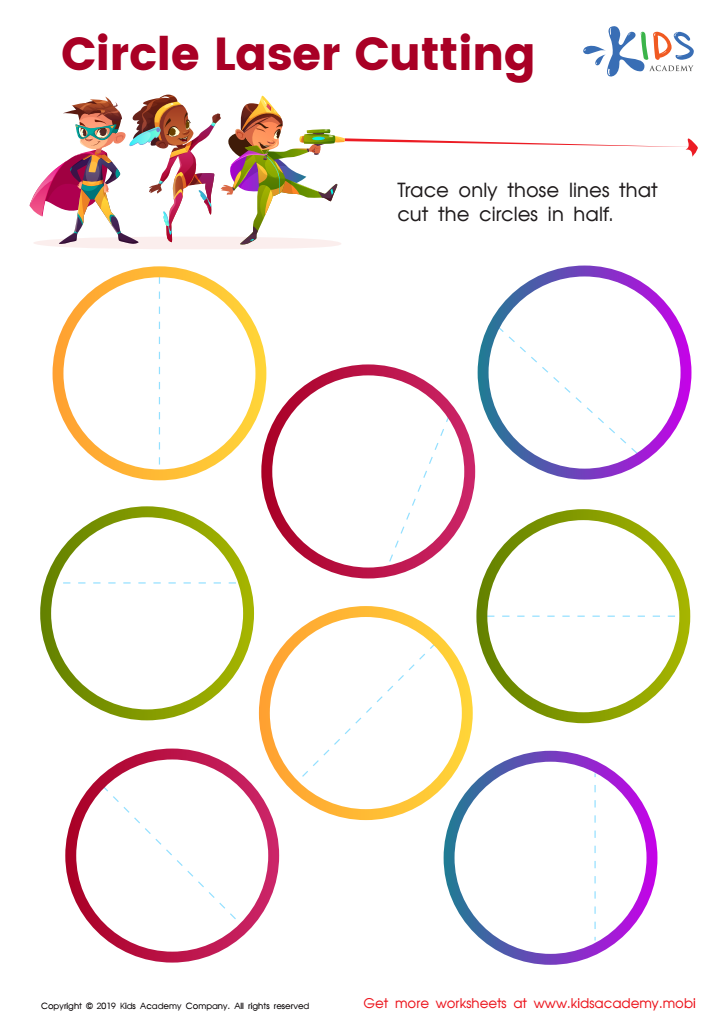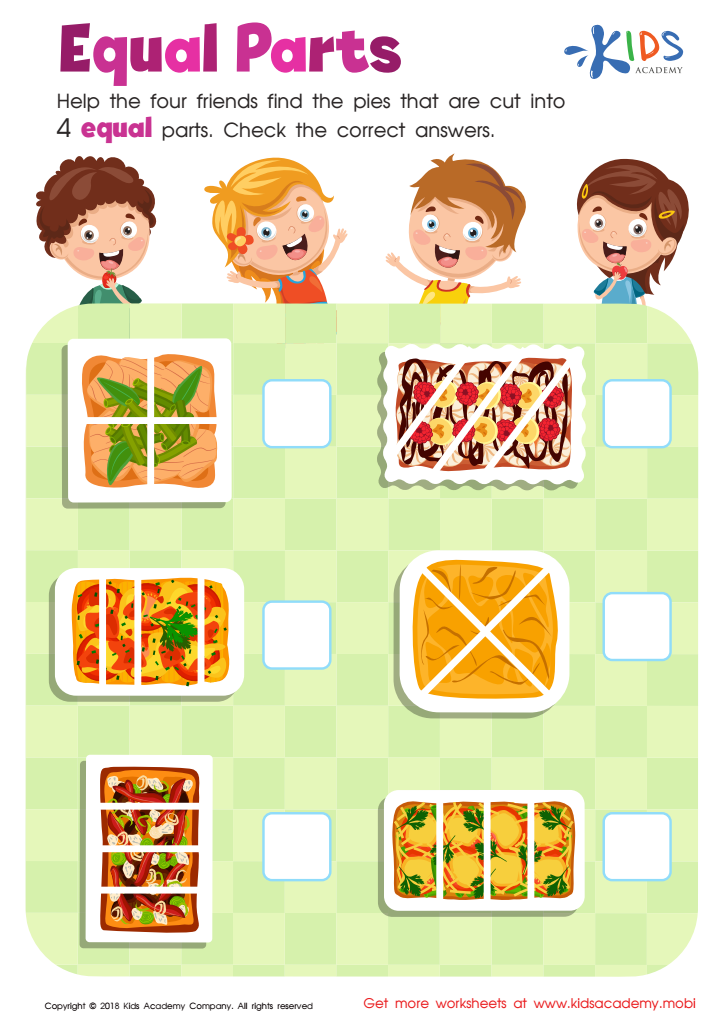Normal Geometry Worksheets for Ages 7-9 - Page 2
27 filtered results
-
From - To


Shapes in Real Life: Cone Worksheet


Circle Laser Cutting Worksheet


Equal Parts: Food Worksheet
Parents and teachers should care about teaching Normal Geometry to children ages 7-9 because it lays a crucial foundation for their overall mathematical development. During this formative stage, children are not only introduced to basic shapes and spatial understanding, but they also begin to develop critical reasoning and problem-solving skills. Engaging with geometry helps children visualize and organize their thoughts, enhancing cognitive functions and promoting logical thinking.
Moreover, geometry is highly applicable in everyday life—from understanding the shapes of objects around us to reading maps and creating artworks. By making geometry relatable and enjoyable, educators can instill a positive attitude towards mathematics, which can significantly impact a child's academic journey.
At this age, children are naturally curious; geometry provides an opportunity to explore this curiosity through hands-on activities. Such engagement can harness their imagination and improve spatial reasoning skills that are vital for advanced math and science subjects later in life.
Additionally, fostering an appreciation for geometry can benefit children's confidence. A solid grasp of geometric concepts equips them with essential life skills, paving the way for success in both academic and real-world scenarios. Therefore, embracing Normal Geometry is essential for nurturing well-rounded, capable learners.

 Assign to My Students
Assign to My Students


























